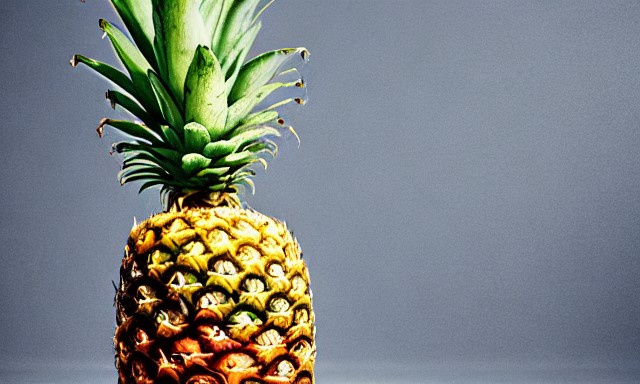Human teeth are quite strong, but they aren’t invincible. With so many popular drinks being acidic, it’s hard to avoid this ubiquitous threat. Today, we’re going to teach you all about the classification of acidity, common acidic drinks, and the dangers of drinking them — as well as some ways to minimize their impact.
Before you can ponder how acidic a certain beverage is, you need to have a good grasp on the ranking system known as the pH scale.
The neutral baseline for the pH scale lies at seven. A pH level greater than seven means that a solution is alkaline while a pH level below seven means that a solution is acidic — with zero and 14 being the bookends to the scale.
For a beverage to be considered acidic, it must have a pH level of 4.6 or lower. Here are a few common beverages that can be classified as acidic:
Starting off with the least acidic beverage on our list. Even the most acidic brew of tomato juice won’t go lower than 4.30 on the pH scale. In fact, some varieties are even above the 4.6 pH threshold needed to classify a beverage as acidic.
Bear in mind that a Bloody Mary may be slightly more acidic due to the fact that vodka has a pH level of four — which is still less acidic than the 3.0 pH level of beer.
While one could be forgiven for thinking that orange juice would be far more acidic, it is actually the second least-acidic beverage in this article — next to tomato juice.
Just because orange juice is high in citrus that doesn’t mean it’s automatically more acidic. The most acidic blend of orange juice wouldn’t even go below 3.69 on the pH scale.
In what might be the upset of the century, it turns out that apple juice is generally more acidic than orange juice. While the deceptive sweetness of apple juice may suggest the contrary, the pH level of apple juice can actually go as low as 3.30.
While the previous beverage might have surprised you, the taste-buds can certainly be trusted when it comes to ranking pineapple juice. Pineapple juice is slightly more acidic than apple juice with a pH level of 3.20.
The pH level of grape juice lies at 2.90 — making it more acidic than most red wines that have a pH range of 3.5 to four and above depending on the variety.
Shocking no one, lemonade takes the acidity belt with a pH level of two — putting it only one rank above gastric acid.
While this list has focused primarily on fruit-based beverages, we couldn’t in good conscience leave this iconic soda out of the list. With a pH level of 2.52, Coca-Cola is only slightly less acidic than lemonade.
Even if you ignore the acidity, this popular soda still has over nine teaspoons of sugar in each can which isn’t exactly ideal if you’re aiming for good health.
Among the three fruit juices compared, grape juice was found to be more acidic with a pH of 2.22–2.81 compared to the pH of orange juice (2.48–3.06) and pineapple juice (2.51–3.91).

EXTREME RISKS FROM ACIDIC BEVERAGES
These risks, while uncommon, are very real:
A tooth abscess is a pocket of pus that forms due to a bacterial infection. Teeth with eroded enamel are more susceptible to the formation of such abscesses since their shield is effectively thinned by the acidic beverages.
In the most unfortunate cases, some patients have lost teeth due to excessive consumption of acidic drinks.
Beyond the issues we mentioned above, here are a few other warning signs that you may be suffering from enamel erosion.
If you notice that your teeth have a rounded look, this may be an indication of enamel erosion. Some have also described the shape as sand-blasted.
If your teeth are transparent around the edges then your enamel is likely thinning around that area.
Cracks on the edges of your teeth are another indicator of enamel erosion. As the enamel in your teeth thins, it becomes more susceptible to cracking. Roughness at the edges could also be a precursor to cracking.
The chewing surface of your teeth may start to develop small dents. This is due to the fact tiny bits of enamel will chip away if it becomes too thin. This has also been referred to as cupping by some dentists.
DANGERS OF ACIDIC BEVERAGES ON TEETH
One of the first oral health problems that you’ll notice after drinking too many acidic drinks is the erosion of your enamel. Enamel is the hard outer layer of your teeth — and one of the few bodily components that can’t grow back.
As the acidic drinks erode your enamel, the sensitive dentin that lies beneath is exposed. This is why your teeth appear more and more yellow as you continue to drink acidic beverages.
Beyond looking awful, exposed dentin also makes your teeth more sensitive to certain stimuli. This includes heat, cold, spiciness, sweetness, and in the pinnacle of irony, even acidic drinks.
High consumption of acidic drinks over long periods of time could lead to more cavities forming as the enamel thins.
pH of Pineapple: Is pineapple acidic or alkaline?
FAQ
Which is more acidic oranges or pineapple?
Is pineapple more acidic than apple?
